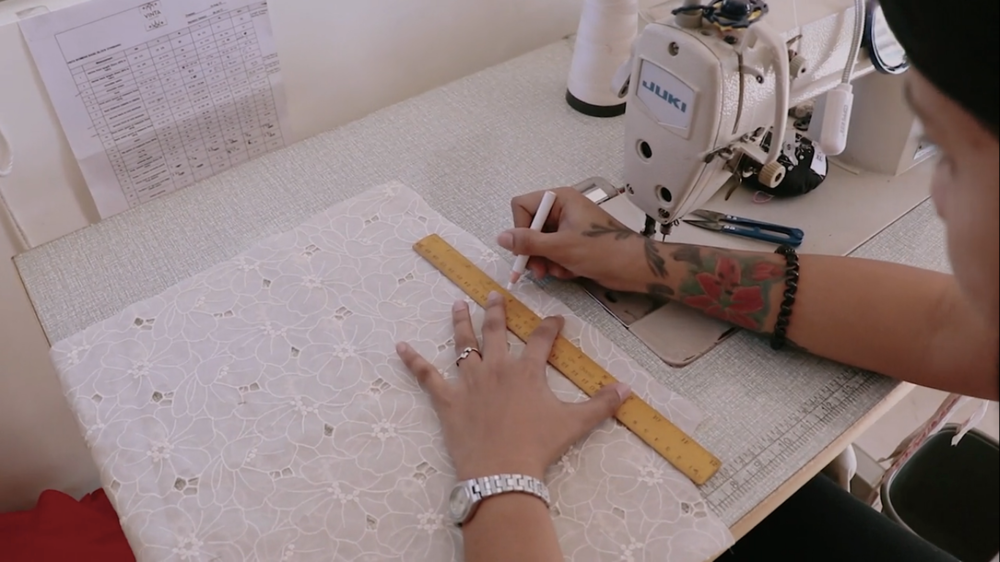Slow and steady wins the race — and in the fashion industry, it wins all around.
You may or may not have heard about the “slow movement” — it started in the 1980s as a protest against the first McDonald’s opening near the Spanish Steps in Rome, Italy. The protestors’ tagline: “We don’t want fast food… we want slow food.”
Since then, the slow movement has extended to all aspects of living, from slow travel and slow cities — and right now, the biggest (and arguably the most crucial) is slow fashion.
What is slow fashion exactly? Slow fashion is an ethical and sustainable approach to fashion, which takes into account all the resources, materials, people and processes required to make clothing. It brings awareness to a slower, more thoughtful mentality towards fashion, as opposed to the continuous, high volume, super wasteful and factory-driven approach we’ve been seeing as of late (a.k.a. fast fashion). Basically, H&M and Forever 21 are like the McDonald’s of fashion.
Just Google “fast fashion statistics” and the results are shocking. The global apparel and footwear industry accounts for 8% of the world’s greenhouse gas emissions releasing four metric gigatonnes of CO2 into the atmosphere. (H&M alone burns over 12 tonnes of unsold garments per year!) Nearly three-fifths or 60% of all clothing produced ends up in incinerators or landfills within a year of being made.
Fast fashion is also one of the leading causes of plastic pollution in our oceans. With each wash, it’s been said that a synthetic garment can shed up to 700,000 fibres — since these fibres are so tiny, they pass through waste water treatment and enter our oceans. According to Greenpeace, an estimated 35% of the microplastic released into the ocean each year are the result of washing sythetic textiles. Fast fashion needs to slow the eff down!
When we started the initial research and development to create VINTA back in 2009, not only did we want to make beautiful and unique modern Filipiniana pieces, but we wanted to go completely against the fast fashion model that was gaining so much popularity at the time. So on top of creating eco-friendly “slow clothing,” our mission from the very beginning was to build a sustainable and ethical business that provided a living wage for the artisans who made our products as well as create further opportunities for growth among these skilled workers. At the end of the day, we believe that sustainability for the business is tied to the sustainability of the people whose hands are creating the end product.

VINTA provides its workers with opportunities to build their skills through apprenticeship and earn a sustainable living wage with benefits.
And what makes the slow fashion trend a win all around — and hopefully in the future, it’ll be less of a “trend,” and more the only way of shopping for clothes — is the fact that not only is it better for the environment and provides way better living wages for the people involved, slow clothing is simply higher quality and longer-lasting.
Fast fashion is just how it sounds — everything is made at the fastest speeds, from design concept to manufacturing to the final fashion product available for purchase. The result? Designer imitations that are low margin, cheaply made and not built to last.
There’s also a movement towards a more minimalist attitude. More and more people are sick of the hoarding and clutter in their homes and closets and opting to minimize their wardrobe with pieces and items they absolutely love. Yup, clothes that only “spark joy.”
Also, is it just us, or are people these days just overall looking super cool and confident? We’re thinking a number of things: 1) Self-love and body love is growing and people are realizing just how essential it is in their lives — and that’s bringing about an IDGAF attitude and a confident self-expression we’ve never seen before. And 2) people’s BS metres are on high. We’re craving more personalization in a time of saturation. We want more authentic stories, purpose-driven missions and companies, smart and innovative entrepreneurs and business owners (women-owned!) who are changing the game. We want MORE people expressing their passion, culture, values and personality through fashion realness. We’re getting excited just thinking about it.

Swag for days. We’re seeing more men wearing VINTA barongs in urban North American cities to fit their own unique style.
At VINTA, we’re all about cultivating that honesty and transparency with everyone we get into contact with — from our clients and customers to our partners and VINTA team members. We strive for those high quality, custom-made, one-of-a-kind pieces that would last a very long time. Every piece is unique and takes love, time and care to create.
“I don’t ever want to go into a ‘factory’ type of manufacturing.”
Learn more about the story and mission behind VINTA Gallery in our video below. At the end of the day, we’ll always continue to make our products in limited quantities and build on the custom-made aspect of the brand.
SOME FREQUENTLY ASKED QUESTIONS ABOUT VINTA
Where do we source the fabrics and textiles used at VINTA?
The hand-loomed textile for the Kaftan and Cotton Wrap and cotton patadyongs are sourced from husband and wife team, Banj and Mike Claparols, who develop the textile from raw materials (Philippine cotton) to production (weaving and dyeing). Their social enterprise supports in sustaining the weaving community in Kabankalan, Negros Occidental, Philippines, a mountainous area two hours outside of Bacolod City. A portion of all their sales contribute toward the nutrition program at Colombo Elementary School in Kabankalan.
The Ifugao Crop Jacket is made from 100% hand-loomed Philippine cotton ethically sourced from Ancestral Crafts this weave features the traditional woven “crown” motif from Ifugao traditions.

Ancestral Crafts is a division of Rurungan sa Tubod Foundation that works with traditional weaving communities to create new products using the existing designs and skills of the weavers. Ancestral Crafts is currently working with weavers in Palawan, Ilocos Norte, La Union, Mt. Province, Iloilo, Basilan and Metro Manila.
Our Inaul Malongs, as well as some of our hand-cast brass jewelry are sourced from The Manila Collectible Co. The Manila Collectible Co. (TMCC) is a CULTURESPACE — a museum, gift shop and heritage tour/workshop provider in the heart of Intramuros, Manila. Among other ethical values, TMCC focuses on promoting services and items created by our indigenous communities, providing means for communities to promote, preserve and revitalize their culture while earning a living. They are actively involved with the communities they work with and provide teacher training, product enhancement and sustainable tourism courses. TMCC also sell fair and trade fair. They actively collaborate with and are transparent about their supply chain. They work with actual cultural makers and masters, not factories.
Where does the Philippine cotton from the textiles come from?
Cotton production in the Philippines is an old age tradition, starting even before pre-Spanish times. Native varieties were grown in the Ilocos, Batangas, the Bicol region and the Visayas. But it has been in decline since the early 1990s, due to a devastating bollworm infestation across the archipelago, killing most of the country’s 38,000 hectares of cotton plantations, according to Philippine Fiber Industry Development Authority (PhilFIDA).
Currently, locally produced cotton costs more than imported cotton, prompting the local textile industry to import the commodity. In November 2017, the agency spearheaded the planting of the Bt cotton variety, a genetically engineered crop that resists bollworm, in the provinces of Ilocos Norte, Pangasinan, Tarlac, Nueva Ecija, and areas in Mindanao in an effort to revive the local cotton industry. Often, cotton farmers alternate their rice planting with cotton. There is still only under 1,000 hectares of cotton plantations being re-cultivated in the Philippines.
Do we use polyester in any of the pieces?
Yes, we do use polyester — mostly in blends like Jusi (a silk/poly blend). Here and there, we will use polyester fabric for some of the terno dresses, most of which are imported from Korea. For the most part, as much as we can, we take time and care to look for natural fibres, like rayon, cotton and silk. Other fabrics we use are purchased from suppliers who import fabrics from Indonesia, China, Korea and Japan.

How do we wash/laundry the pieces? Is it all dry clean?
For the most part, we say to minimally dry clean the garments. The main reason for this is many of the indigenous textiles are not colourfast; another reason is to maintain the garment structure, like the traditional butterfly terno sleeve. But we also warn customers to take care in not dry cleaning too often, particularly the barongs as the fibres dry out and get brittle, which then results in tears and rips at the creases. Silk in particular is quite fragile to dry cleaning. Silk is susceptible to breakage from UV exposure. We recommend, if you do handwash your Barong, do not lay it out in the sun to dry. Keep it in the shade, or inside. Also, handwash your VINTA pieces with cold water, which not only can also reduce energy and your environmental impact by as much as 80%, but it also releases less microfibres than using hot water.

